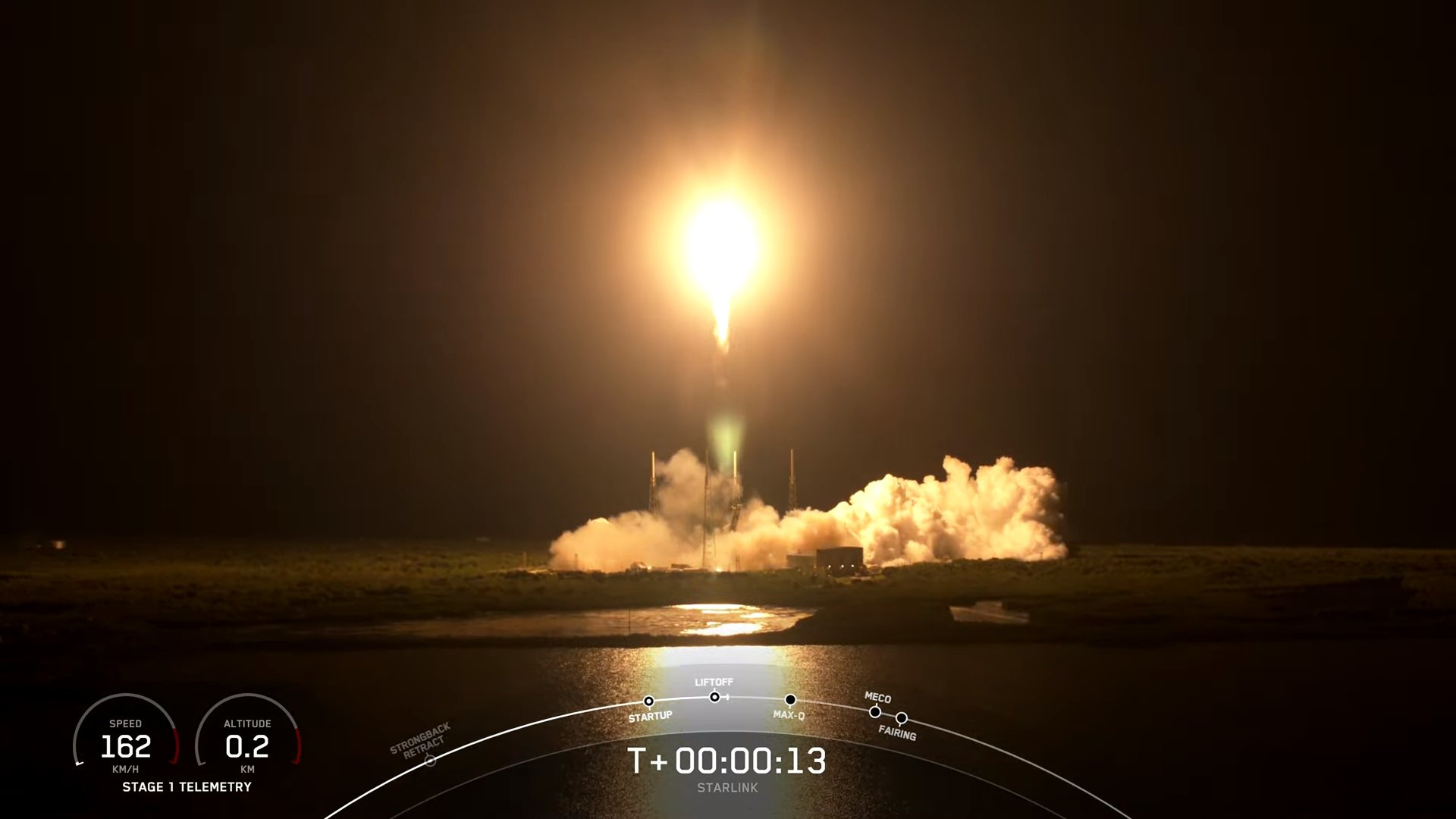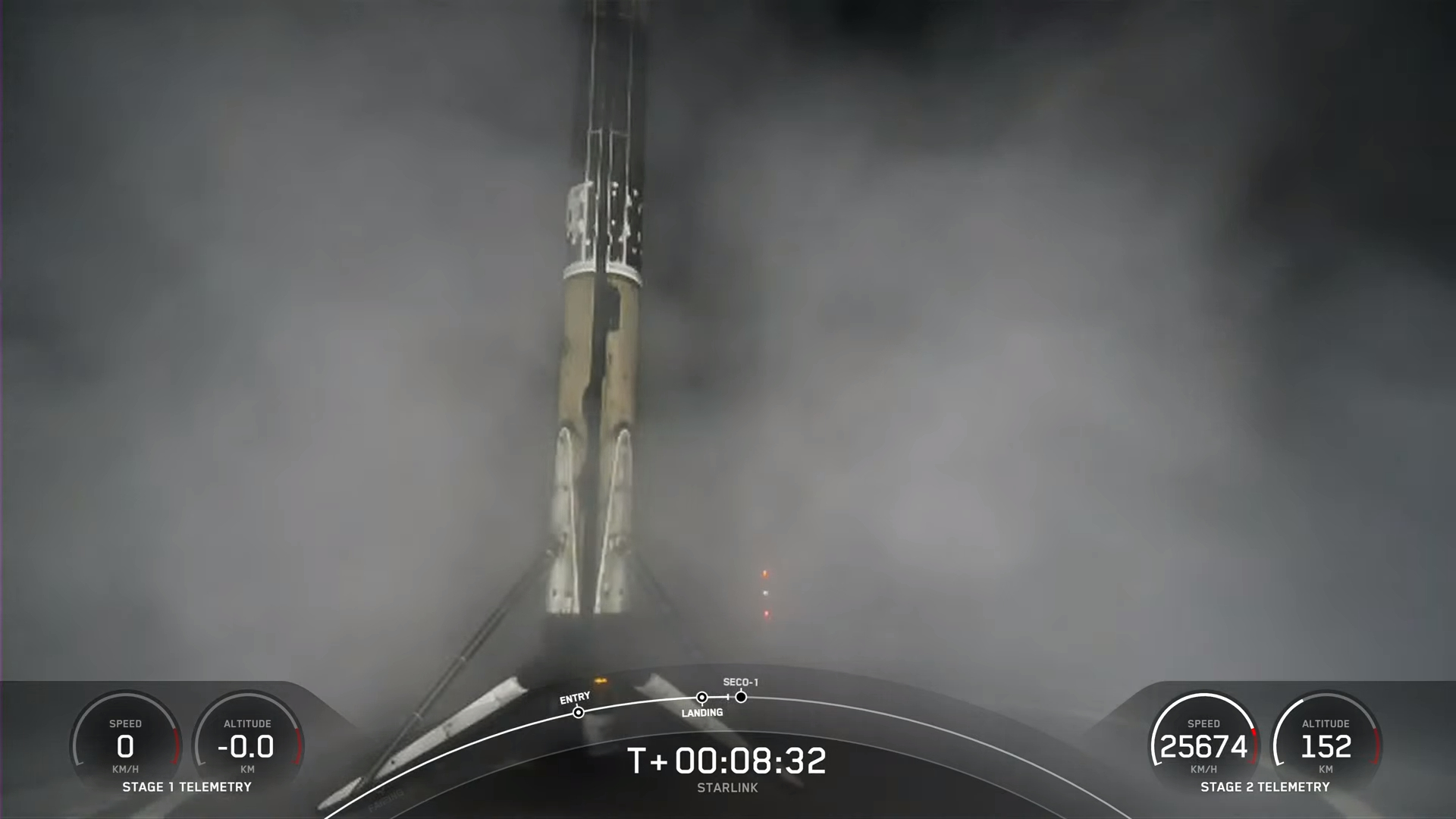A SpaceX Falcon 9 rocket a new fleet of Starlink satellites into orbit and landed on a platform in the Atlantic Ocean late Saturday in what was a record-tying 16th flight for the booster.
The Falcon 9 rocket topped with 54 of SpaceX's Starlink internet satellites lit up the late night sky as it soared into orbit Saturday (July 15) from Cape Canaveral Space Force Station in Florida. Liftoff occurred at 11:50 p.m. EDT (0350 GMT on July 16).
The smooth SpaceX launch came one day late, following an attempted to launch early Friday that SpaceX had to abort at the last minute due to high liquid oxygen levels on on of the rocket's nine first-stage engines, SpaceX components engineer Zachary Luppen said during live commentary.
Related: 8 ways SpaceX has transformed space travel

The Falcon 9's first stage returned to Earth for a vertical touchdown about 8.5 minutes after launch on the SpaceX droneship A Shortfall of Gravitas.
It was the 16th launch and landing for this booster, according to a SpaceX mission description. That ties a record set just last Sunday (July 9) by a different Falcon 9 first stage flying another Starlink mission. The landing also marked SpaceX's 207th orbital rocket landing and 247th mission overall, Luppen said.
The Falcon 9's upper stage, which is not reusable, continued hauling the 54 Starlink satellites to low Earth orbit. It was expected to deploy the satellites about 66 minutes after liftoff.
Get the Space.com Newsletter
Breaking space news, the latest updates on rocket launches, skywatching events and more!
These batch of Starlink satellites stands out from the thousands SpaceX has launched to date as it is the final set of Starlink Version 1.5 satellites the company will launch, Luppen said. The company is shifting to a new Version 2 of the Starlink internet satellites, and has already launched mini-V2 versions into orbit.

The Starlink launch is part of a busy few days in spaceflight. On Friday morning (July 14), for example, India launched its robotic Chandrayaan 3 mission, which aims to pull off the country's first-ever soft landing on the moon next month.
And on Sunday evening (July 16), a Rocket Lab Electron launcher will send seven small satellites skyward from the company's New Zealand site. Rocket Lab is working to make the Electron's first stage reusable, and Sunday's mission, called "Baby Come Back," includes a planned recovery of the booster from the Pacific Ocean.
Editor's note: This story was updated at 12:15 a.m. ET on July 16 with the results of the successful SpaceX Starlink satellite launch.
Join our Space Forums to keep talking space on the latest missions, night sky and more! And if you have a news tip, correction or comment, let us know at: community@space.com.

Michael Wall is a Senior Space Writer with Space.com and joined the team in 2010. He primarily covers exoplanets, spaceflight and military space, but has been known to dabble in the space art beat. His book about the search for alien life, "Out There," was published on Nov. 13, 2018. Before becoming a science writer, Michael worked as a herpetologist and wildlife biologist. He has a Ph.D. in evolutionary biology from the University of Sydney, Australia, a bachelor's degree from the University of Arizona, and a graduate certificate in science writing from the University of California, Santa Cruz. To find out what his latest project is, you can follow Michael on Twitter.








